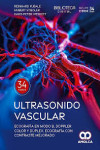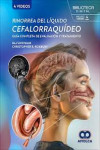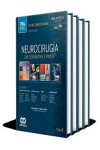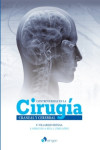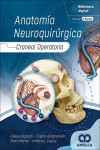CHORDOMAS. TECHNOLOGIES, TECHNIQUES, AND TREATMENT STRATEGIES
Pamir, M.N. - Al-Mefty, O. - Borba, L.A.
Datos técnicos
- ISBN 9781626231597
- Año Edición 2017
- Páginas 256
- Idioma Inglés
Sinopsis
A rare form of cancer, chordomas are among the most difficult tumors to treat, requiring highly specialized training and surgical expertise. Althoughgenerally slow-growing, chordomas present resection challenges due to their proximity to critical structures including the spinal cord, brainstem,nerves, and arteries. Written by an impressive cadre of internationally-renowned experts, this textbook is the most current, concise, and definitiveresource on diagnosis and management of this complex pathology.
Acclaimed surgeons from Brazil, Canada, Japan, Turkey, the USA, and the UK are contributors. The book starts with a historical overview,epidemiology, molecular pathogenesis, cytogenetics, local invasion and metastasis, and pathology. A thorough discussion covers diagnosticradiological and radionuclide imaging such as MRI, PET; SPECT, PET-CT, and PET-MRI, and clinical traits of skull base and spinal chordomas as definedby imaging modalities. Subsequent chapters explore decision making including selecting the most optimal techniques, surgical procedures, specializedtopics, and new horizons in chordoma treatment.
Key Highlights
Anterior and anterolateralapproaches to theclivus
The use of endoscopy and intraoperativeassistivetechnologies
Midlinesubfrontal, middlefossa, extended petrosal, and transcondylarapproaches
Craniospinalfusiontechniquesfollowingresection
Surgeryforspinalchordomasfromthe cervical to thesacralregion
Specialtopicssuch as radiation, protonbeamtherapy, Gamma-Kniferadiosurgery, and pediatricchordomas and chondrosarcomas
This is an essential text for neurosurgeons, orthopedic spine surgeons, otolaryngologists, and radiation oncologists. Read and learn from innovatorswho have mastered the latest state-of-the-art treatment methodologies for chordomas.
Contents
Section I: Definition, History, Demographics, Pathology, and Pathogenesis Chapter 1: Historical Aspects Christopher C. Young, Timothy R. Smith, Wenya Linda Bi, Ian F. Dunn, and Edward R. Laws Jr. Chapter 2: The Descriptive Epidemiology of Chordomas Elizabeth B. Claus Chapter 3: Evolutionary Origin of the Notochord Noriyuki Satoh Chapter 4: Molecular Biology of Chordomas Adrienne M. Flanagan and Koray Özduman Chapter 5: Cytogenics of Chordomas Kaith K. Almefty and Ossama Al-Mefty Chapter 6: LocalInvasion and Metastasis Kenan I. Arnautovic and Ossama Al-Mefty Chapter 7: Pathology Aydin Sav Chapter 8: Experimental Models of Chordomas Koray Özduman, UlaÅŸYener, and M. Necmettin Pamir Section II: Diagnosis of Chordomas Chapter 9: Radiologic Findings and Differential Diagnosis of Chordomas at the Skull Base Alp Dinçer andCanan Erzen Chapter 10: Radiologic Findings and Differential Diagnosis of Chordomas in the Spine Jeffrey P. Guenette, Hyewon Hyun, and Srinivasan Mukundan Jr. Chapter11: Molecular Imaging of Chordomas Hyewon Hyun, Jeffrey P. Guenette, and Chun K. Kim Section III: Surgical Treatment of Chordomas Chapter 12: Surgical Decision Makingin Chordomas M. Necmettin Pamir and Ossama AlMefty Chapter 13: Choice of the Optimal Surgical Approach for Skull Base Chordomas Luis A. B. Borba, Marcio S. Rassi, andOssama Al-Mefty Chapter 14: Anterior Approaches to the Clivus Marcio S. Rassi, Paulo A. S. Kadri, Francisco V. De Mello Filho, Benedicto O. Colli, and Luis A. B. Borba Chapter15: Endoscopic Approaches for Skull Base Chordomas Savas Ceylan, Ihsan Anik, and Burak Cabuk Chapter 16: Frontobasal Approaches to Clivus Chordomas M. NecmettinPamir, Koray Ö zduman, and H. Ä°brahim Sun Chapter 17: Cranio-orbital “Zygomatic Approach for Chordomas Rami O. Almefty, Kaith K. Almefty, and Ossama Al-MeftyChapter 18: Epidural Middle Fossa Approaches Takeshi Kawase Chapter 19: The Extended Petrosal Middle Fossa Approach Paulo A. S. Kadri, Denildo C. A. Verissimo, MarcioS. Rassi, and Luis A. B. Borba Chapter 20: The Transcondylar Approach to the Clivus Marcio S. Rassi, Luis A. B. Borba, and Ossama Al-Mefty Chapter 21: CraniovertebralReconstruction after Chordoma Resection Thomas Kosztowski, Jay Rhee, Mohammad Bydon, Benjamin D. Elder, and Ziya L. Gokaslan Chapter 22: Surgery for SpinalChordomas Thomas Kosztowski, Mohamad Bydon, C. Rory Goodwin, and Ziya Gokaslan Chapter 23: Intraoperative Assistive Technologies for Chordoma Surgery M.Necmettin Pamir, Koray Özduman, and Geysu Karlikaya Section IV: Special Topics in Chordomas Chapter 24: Chordomas: A Personal Perspective Ossama Al-Mefty and RamiAlmefty Chapter 25: Radiation Treatment for Chordomas Banu Atalar, Enis Ozyar, and Robert C. Miller Chapter 26: Charged Particle Beams in Management of ClivalChordomas Enis Ozyar, Robert C. Miller, and Banu Atalar Chapter 27: Stereotactic Radiosurgery for Chordomas Andrew Brunswick and Douglas Kondziolka Chapter 28:Recurrence in Skull Base Chordomas and Its Management M. Necmettin Pamir and Koray Özduman Chapter 29: Outcome and Quality of Life of Patients with ChordomasBenedicto O. Colli and Luis A. B. Borba Chapter 30: Chordomas and Chondrosarcomas in the Pediatric Population Vassilios Tsitouras, William Halliday, and James T. RutkaChapter 31: Future Prospects in the Treatment of Skull Base Chordomas M. Necmettin Pamir, Luis A. B. Borba, and Ossama Al-Mefty
Otros libros que te pueden interesar
- ¿Quiénes somos?
- Gastos de envío
- Política de privacidad
- Políticas de devolución y anulación
- Condiciones Generales de contratación
- Contacto
2025 © Vuestros Libros Siglo XXI | Desarrollo Web Factor Ideas






